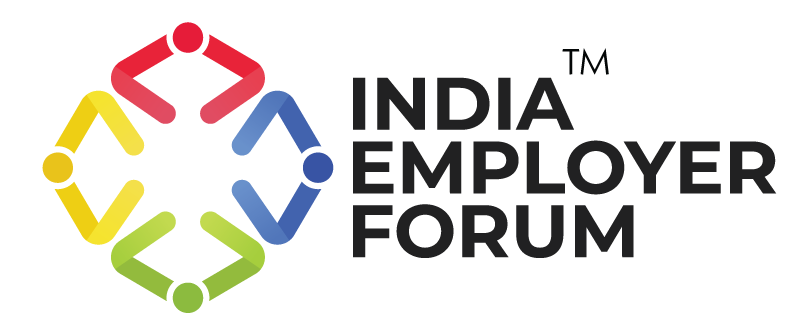In an era where competition for top talent is fierce, organizations are struggling with the challenge of retaining skilled employees. With 65% of hiring managers reporting difficulty in finding qualified talent due to a lack of digital skills, upskilling has become a critical component of talent retention strategy. Organizations must adopt a strategic approach: Skill, Retain, Repeat. This modern workforce stability framework focuses on developing employees through upskilling. In this article, we explore how upskilling serves as a powerful strategy for talent retention and its impact on employee engagement and retention.
The Talent Retention Crisis
Employee turnover continues to be a growing concern across industries, driven by both involuntary and voluntary attrition. Involuntary attrition, largely due to layoffs, increased to 4.3% in 2024, up from 4% in the previous year. Voluntary attrition, on the other hand, has shown improvement, dropping from 17% in 2022 to 12.6% in 2024, as more employees choose to hold on to their jobs amid the uncertainty in the job market.
High turnover rates come with considerable costs for organizations. Recruiting, onboarding, and training new employees, particularly for specialized or senior roles, can quickly strain company resources. In addition to financial expenses, the departure of experienced employees results in the loss of valuable knowledge and skills, creating gaps that disrupt operations. For companies relying on the continuity of ongoing projects, this disruption can be especially detrimental, as the process of finding and training replacements delays progress.
Additionally, employees are demanding more than just job security, they expect flexible work arrangements, mental health support, and inclusive workplace policies. Organizations must adapt to these changing needs by offering comprehensive benefits that prioritize well-being, career advancement, and a supportive workplace culture.
Upskilling as a Part of Talent Retention Strategy
Employees who engage in upskilling opportunities often experience increased job satisfaction and engagement, as they feel more competent and valued in their roles. This sense of growth and development not only enhances individual performance but also contributes to a more dynamic and innovative workplace culture.
Upskilling enables employees to stay relevant amidst technological advancements and industry shifts. A study by Skillsoft found that 40% of employees worry about job security due to insufficient skills, highlighting the importance of continuous learning in alleviating such concerns. Several organizations have successfully leveraged upskilling programs to retain talent. For example, organizations are implementing generative-AI learning platforms that incentivize employees to enhance their skills in this burgeoning field. This initiative not only addresses the ‘fear of becoming obsolete’ (FOBO) among employees but also fosters a culture of innovation and continuous improvement. Investing in employee development is not merely a talent retention strategy; it’s a commitment to building a resilient and future-ready workforce.
From Gaps to Growth
A well-structured upskilling program is essential for organizations aiming to stay ahead in today’s dynamic job market. By systematically identifying skill gaps and implementing tailored learning initiatives, businesses can build a future-ready workforce while enhancing employee engagement and retention.
The first step in building an upskilling strategy is assessing skills gaps. Companies must analyze industry trends, emerging technologies, and workforce capabilities to determine which competencies need development. Once skill gaps are identified, organizations can design structured learning pathways. This includes a mix of online courses, instructor-led training, and microlearning modules that cater to different learning styles. Mentorship and coaching also play a crucial role in upskilling. Pairing employees with experienced professionals fosters knowledge-sharing and hands-on learning.
Finally, a culture of continuous learning must be ingrained within the organization. Companies that integrate upskilling into performance management and career development plans like those leveraging GenAI-driven learning models empower employees to take ownership of their growth. By strategically implementing these steps, businesses can not only close skills gaps but also drive innovation and future-proof their workforce in an era of rapid technological change.
Measuring the Impact: Retention by the Numbers
To quantify its impact, companies must track key performance indicators (KPIs) that reflect workforce stability and productivity. One of the most critical metrics is the employee retention rate. Organizations can compare retention levels before and after implementing upskilling programs to determine whether learning initiatives contribute to longer tenures. Studies show that employees who receive continuous development opportunities are more likely to stay, reducing hiring costs and turnover disruptions.
Another essential factor is employee engagement and satisfaction. Surveys, feedback mechanisms, and performance assessments help gauge how learning opportunities affect motivation. When employees feel supported in their career growth, they are more likely to be engaged, productive, and loyal to the organization.
To assess the business impact, companies should measure productivity improvements and performance metrics. Tracking how newly acquired skills translate into efficiency gains, innovation, and project success provides tangible evidence of an upskilling program’s effectiveness. Moreover, ROI calculations enable organizations to justify upskilling investments. By comparing training costs against benefits such as reduced turnover, increased efficiency, and higher employee satisfaction, organizations can showcase the long-term value of talent development.
Conclusion
As an organization retaining top talent requires more than just competitive salaries, it demands a commitment to continuous learning and career growth. By implementing structured learning pathways, leveraging mentorship, and measuring impact through data-driven insights, businesses can build a resilient workforce that thrives amid industry disruptions. The key to retention is clear: Skill, Retain, Repeat.






